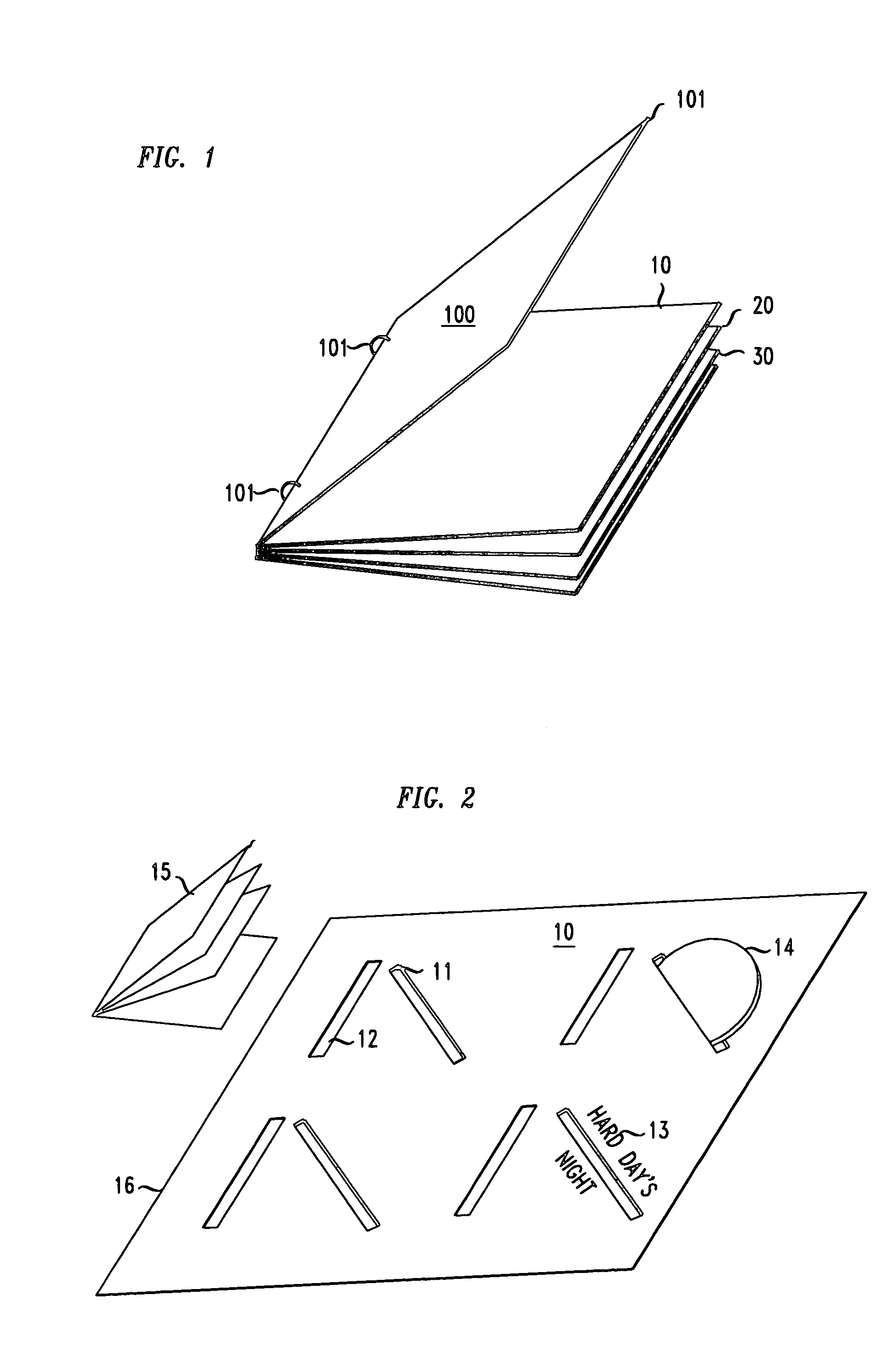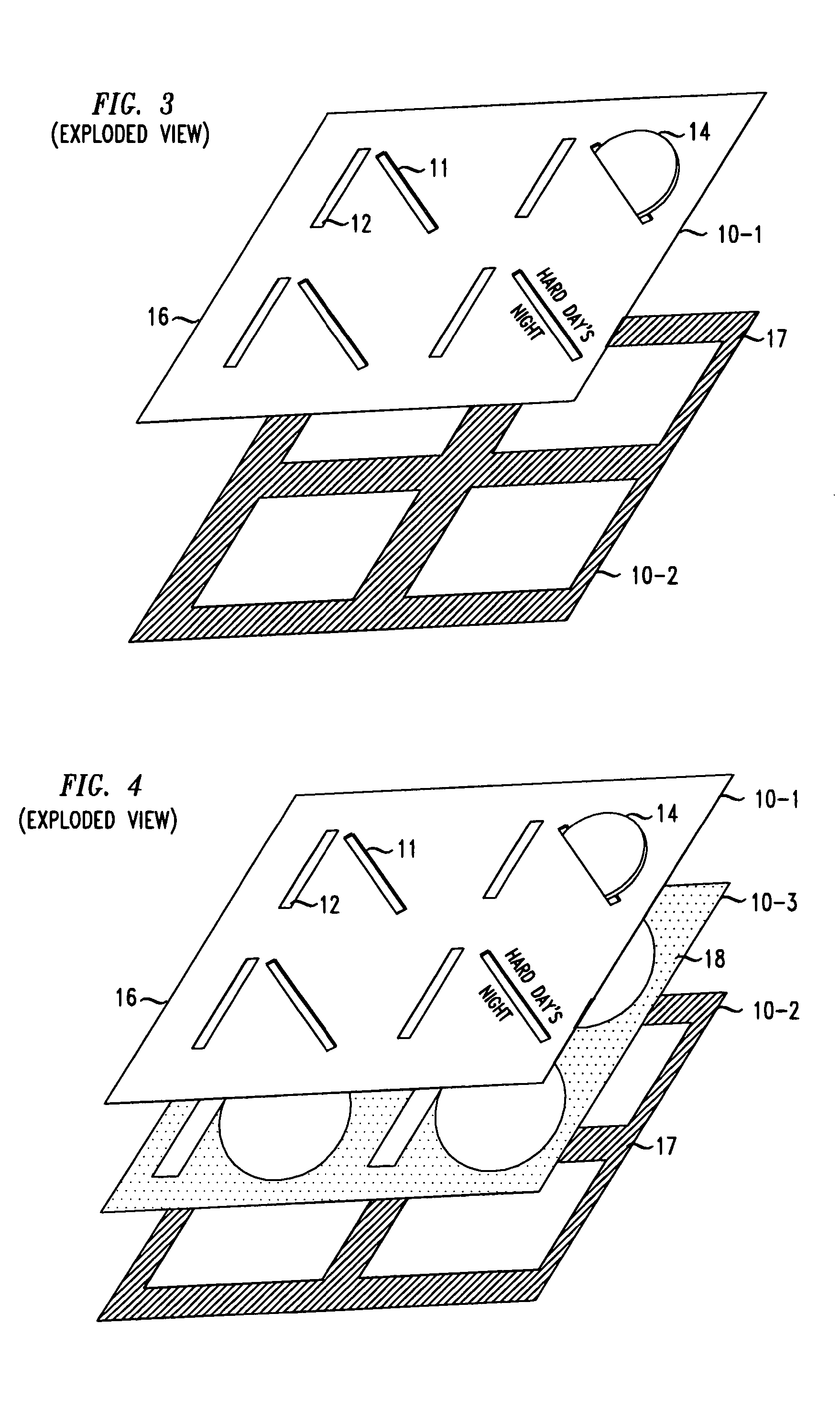System for storing and displaying audio/video works
- Summary
- Abstract
- Description
- Claims
- Application Information
AI Technical Summary
Benefits of technology
Problems solved by technology
Method used
Image
Examples
Embodiment Construction
[0023]This invention provides a collectible keepsake book-like storage system for storing discrete collections of CDs, DVDs, or other entertainment-content storage devices and associated descriptive media. This system may be pre-customized, for example, for storing the CD-based media relating to a specific artist or subject, it can be customized by the user of the system, or it can form a general storage system. The book-like storage system typically comprises a plurality of pages having a novel construction that includes specific locations for inserting the entertainment content storage devices and for inserting associated descriptive media. In its customized embodiment, at least some of the locations for holding the storage devices include an identifier to assist the user in the organizing of the user's storage device, such as CD, and associated descriptive matter media, such as booklets, pictures, listing of song titles, lyrics, etc. The identifier may be a label, a picture, etc....
PUM
 Login to View More
Login to View More Abstract
Description
Claims
Application Information
 Login to View More
Login to View More - R&D
- Intellectual Property
- Life Sciences
- Materials
- Tech Scout
- Unparalleled Data Quality
- Higher Quality Content
- 60% Fewer Hallucinations
Browse by: Latest US Patents, China's latest patents, Technical Efficacy Thesaurus, Application Domain, Technology Topic, Popular Technical Reports.
© 2025 PatSnap. All rights reserved.Legal|Privacy policy|Modern Slavery Act Transparency Statement|Sitemap|About US| Contact US: help@patsnap.com



